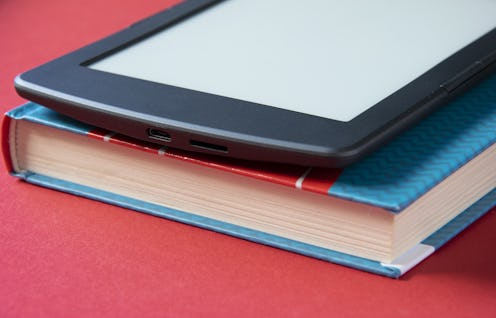Books
The 'Actual' Book: Going the Way of Gutenbergs?
Amazon announced on Tuesday that customers who purchased books from Amazon — all the way back to 1995 when the online retailer first opened its internet doors — will be able to get the corresponding e-book for the significantly reduced prices of 99 cents to $2.99.
This is a good thing, right? For some specific purposes, e-books are much, much easier to access and use. Readers can search for a favorite line or double check a fact without having to wait until they get home, and by that time they’d probably have forgotten, anyway.
But the program, which seems to be a litmus test for consumers’ desire for bundled e-book/physical book bundles, could facilitate the shift to the e-book as the publishing world’s primary product. Clearly the market is going that way. In 2010, Amazon’s daily Kindle sales outpaced hardcover sales, just three years after introducing Kindle. And according to a 2013 survey of publishers, fiction e-books sales increased 42 percent in 2012 from the year before, with all e-book sales comprising 20 percent of publishers’ business. That figure, too, was an increase from 2011, in which e-book sales represented only 15 percent of publishers’ revenue.
If this retroactive program is successful, and Amazon routinely offers bundle package for the price of one-and-a-fraction copies, this could be the way online retailers coax tangible-copy sentimentalist into the e-book world. Furthermore, this two-for deal could have a hand in accelerating the demise of the brick-and-mortar bookstore. That same survey found that publishers’ revenue from physical stores dropped by seven percent while revenue from online retailers rose by 21 percent.
Even more significantly, though, the way we understand books is at a crucial moment of change, and programs like this might be what brings that shifting framework to its completion. “A lot of people are really attached to the idea of sticking books on a shelf,” Russ Grandinetti, vice president of Kindle Content, told the New York Times.
This is an intriguing and telling way to describe readers’ attachment to physical books. As Grandinetti’s point suggests, the physical book in this deal is seen as a decorative art object. It is less useful than an e-copy, and its attraction is mainly aesthetic. This perspective is akin to the way we view the treasured tomes of rare books libraries — they are for looking, and studying, but not for actual reading. It, therefore, raises the question: Are hardcovers on their way to becoming Gutenberg bibles — or worse, knick knacks?
Image: Valentine/Fotolia
